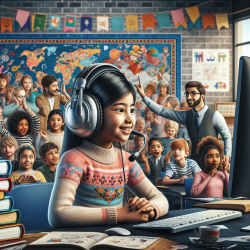Introduction
Hearing loss in children is a critical issue that can significantly impact their development and future opportunities. The narrative review titled How the World’s Children Hear: A Narrative Review of School Hearing Screening Programs Globally provides a comprehensive overview of the current state of school hearing screening programs worldwide. This blog will explore the key findings and implications for practitioners, emphasizing the importance of data-driven decisions to enhance outcomes for children.
Current State of School Hearing Screening
The review highlights that school hearing screening is not universally mandated, with significant variations in protocols and practices across different regions. This inconsistency leads to challenges in accurately identifying children with hearing loss, which can delay intervention and exacerbate developmental delays.
Key findings from the review include:
- Most regions lack standardized guidelines for school hearing screening.
- Screening protocols vary widely, with differences in audiometric frequencies and referral criteria.
- There is a high rate of loss to follow-up, with many children not receiving necessary interventions after initial screening.
Implications for Practitioners
For practitioners, these findings underscore the need for a more standardized approach to school hearing screening. By adopting uniform protocols, practitioners can ensure more reliable identification of hearing loss and facilitate timely interventions. Key recommendations include:
- Implementing pure tone screening with circumaural headphones at 1, 2, and 4 kHz, with a referral threshold of >20 dB HL at any frequency.
- Incorporating tympanometry and otoscopic examination to evaluate middle ear pathology.
- Establishing a mandatory rescreening process to reduce false positives and improve the accuracy of initial screenings.
- Ensuring follow-up procedures are in place to connect children with diagnostic and treatment services.
Encouraging Further Research
The review also highlights significant gaps in the literature, particularly regarding the true prevalence of hearing loss among school-aged children and the performance of screening tests. Practitioners are encouraged to contribute to this body of research by documenting and sharing their experiences and outcomes. Collaborative efforts can help refine screening protocols and improve the effectiveness of interventions.
Conclusion
Standardizing school hearing screening protocols globally is essential to improve the identification and treatment of childhood hearing loss. By adopting data-driven practices and advocating for further research, practitioners can play a pivotal role in enhancing the developmental outcomes for children worldwide.
To read the original research paper, please follow this link: How the World’s Children Hear: A Narrative Review of School Hearing Screening Programs Globally.










